Tomatoes can be finicky when it comes to watering. Too much or too little can both lead to wilting leaves, damaged fruit, and disease.
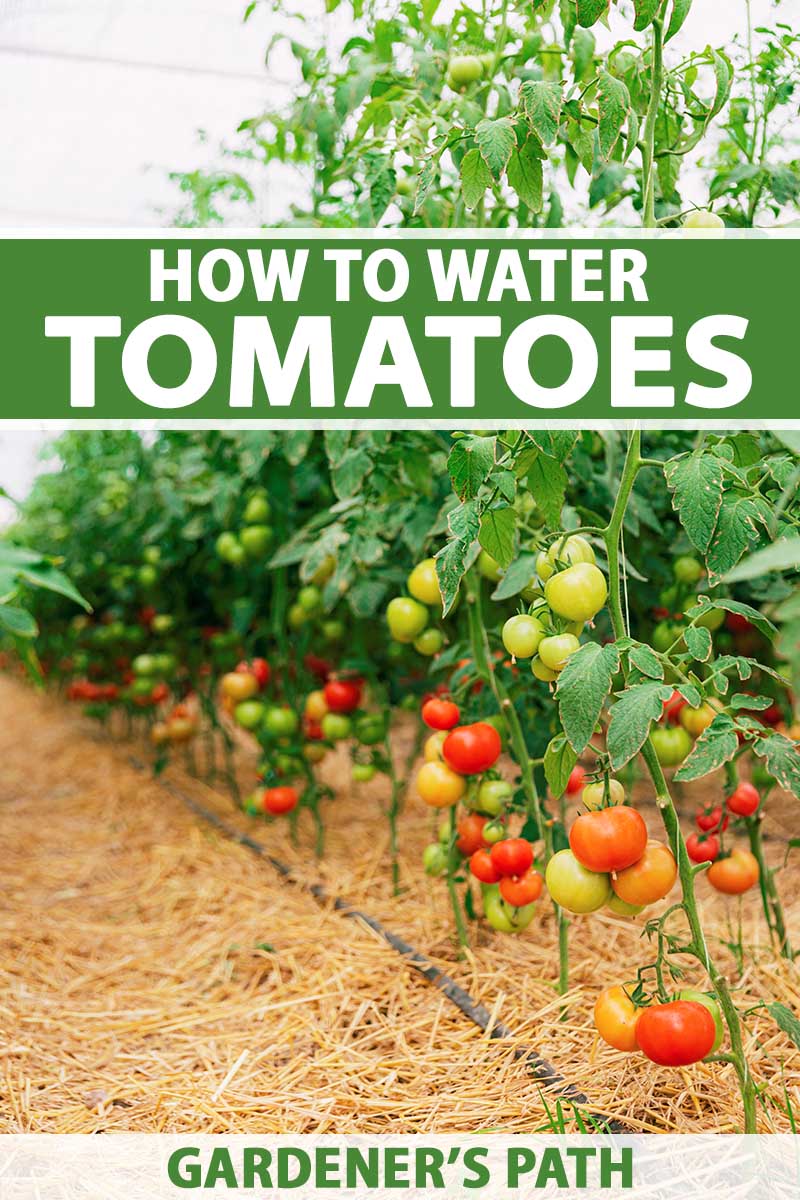
We link to vendors to help you find relevant products. If you buy from one of our links, we may earn a commission.
But knowing how to irrigate properly can make a huge difference for the health of your plants!
Read on to learn all about how and when to water tomatoes.
What You’ll Learn
How Much Water Do Tomatoes Need?
How much moisture tomatoes need changes over the course of the growing season.
New transplants require consistent, frequent moisture. They should receive about a quart a day for the first two weeks, more if there is a lot of sun and wind.
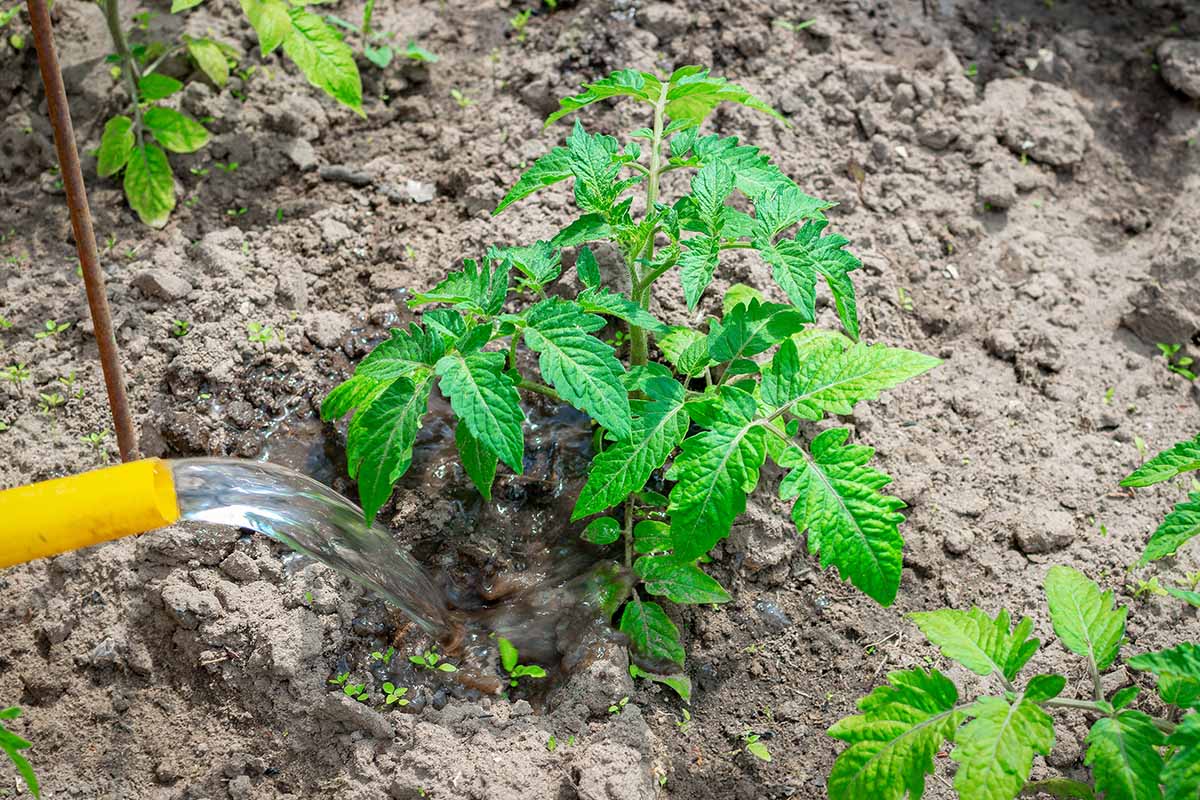
After the first two weeks, once roots have become established, it’s best to provide one to three inches per week, watering every two to three days.
This translates to roughly somewhere between a half gallon and two gallons of water per square foot of soil per week.
Once fruits start to mature and turn red, cut back the amount a bit to reduce the likelihood of splitting or cracking, but still maintain frequency so they don’t dry out.
Frequent Deep Watering
While quantity is certainly important, the method of watering matters just as much, if not more.
In order to cultivate strong, healthy, high-yielding plants, it is important to use a technique known as deep watering.

Essentially, you want to provide slow, consistent moisture to the roots, ideally using drip irrigation or a soaker hose. This method helps to build strong root systems and prevents disease spread.
Avoid overhead watering as splashing droplets from a sprinkler or hose can quickly spread blight or other common tomato diseases from plant to plant.
If you must use a hose, be sure to spray the soil at the base of the plant rather than the leaves.
Water slowly for 30 minutes to a couple of hours at a time when using drip irrigation or a soaker hose system, allowing moisture to penetrate deeply into the soil.

Do this daily for the first two weeks until transplants are well established. After this time, reduce frequency to two to three times per week, depending on rainfall and soil conditions.
Be consistent, as sporadic watering can lead to blossom-end rot or other problems. You can learn more about blossom-end rot and how to avoid it here.
Other Factors to Consider
While the recommendations above provide a good general baseline, you may need to adjust slightly to account for other factors such as soil type and weather.
Soil Type
It is important to consider the type of soil in your garden. Soil type can impact drainage, which will in turn affect how much moisture plants will require.
For particularly sandy soils, which drain quickly, you should double the amount of recommended water provided during each stage of growth.
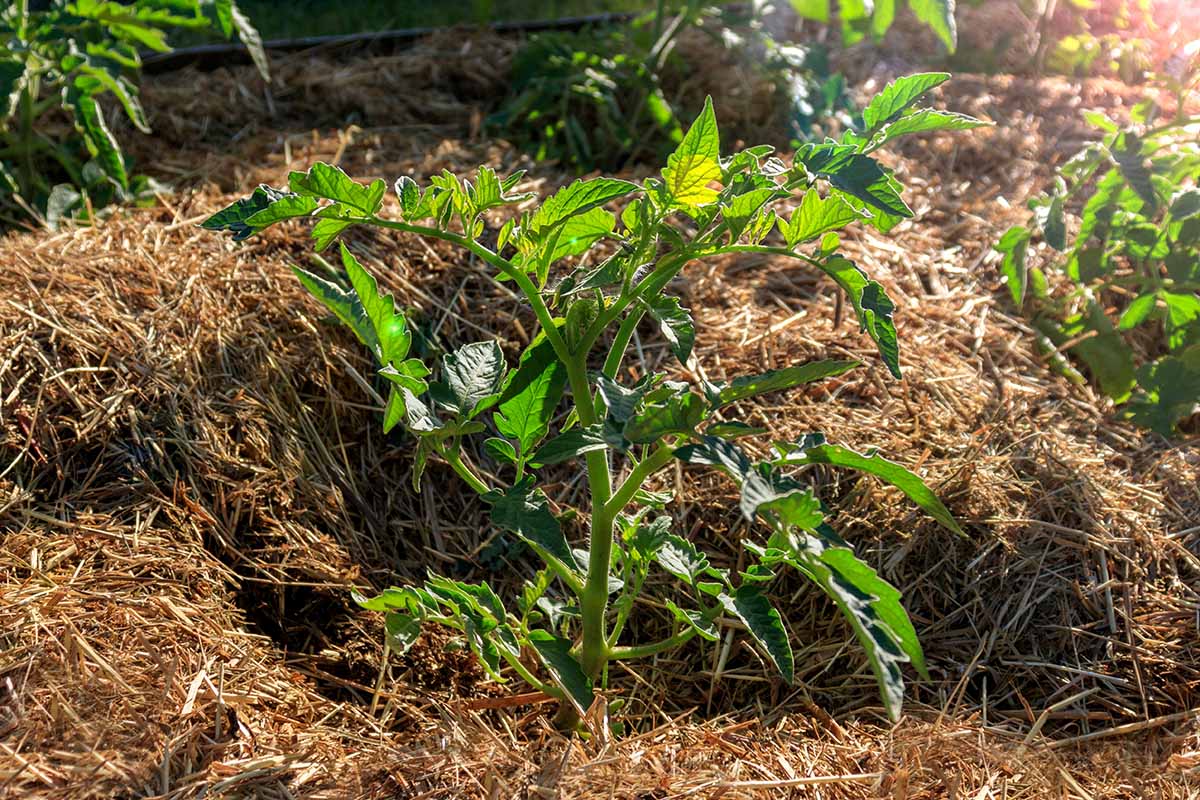
Clay, on the other hand, absorbs less easily, causing moisture to pool or run off. To avoid these problems, be sure to water slowly, using drip irrigation or a soaker hose whenever possible.
In both of these cases, mixing in some organic matter can help to improve drainage. Adding a few inches of straw mulch is another great way to improve moisture retention.
Weather and Climate
Pay attention to heat and rainfall. If you experience an extended period of drought, plants may need three inches a week rather than one or two. Conversely, decrease to account for rainfall.
You can try using a rain gauge to help keep track of precipitation. Learn more about using a rain gauge in the garden here.
If you don’t have a rain gauge, you can use your finger to check soil moisture.
While it may not be quite as accurate as a measurement of precipitation in inches, if the soil feels dry an inch below the surface, this is a good indication that you need to water.
Container-Grown Tomatoes
Container-grown tomatoes need more frequent watering than garden-grown ones.

Water container plants once or twice a day until you notice moisture seeping out of the drainage holes.
Plants growing in raised beds should be watered daily as well. Check pots frequently as soil can dry out quickly, always being sure to keep the soil moist but not soggy.
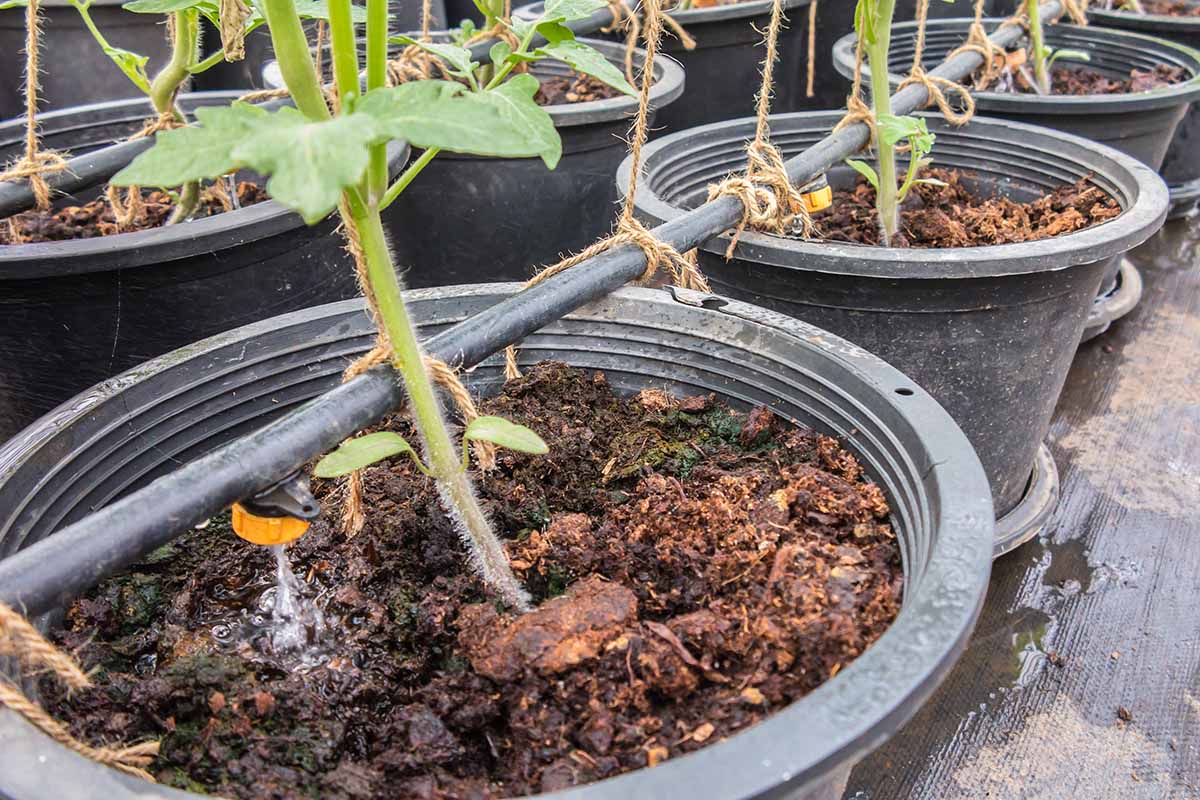
And just as with garden-grown plants, be sure to water the soil, not the leaves. You can even set up a drip irrigation system over containers.
This works best if you have several pots or if you are growing in a raised bed.
Irrigation Tips
- Always wet the soil at the base of the stem, using drip irrigation or a soaker hose if available.
- A few inches of straw mulch can improve moisture retention and regulate soil temperature.
- Observation is important. If the soil looks cracked and feels dry, or you notice wilting, brittle leaves, it’s time to turn on that soaker hose!
- Also monitor for signs of overwatering. Cut back if you notice cracked or tasteless fruit, a foul smell around plants, or yellowing, curling leaves.
When in Doubt, Keep It Simple
While it may seem like there is a lot to watering tomatoes, the truth is it isn’t too challenging.
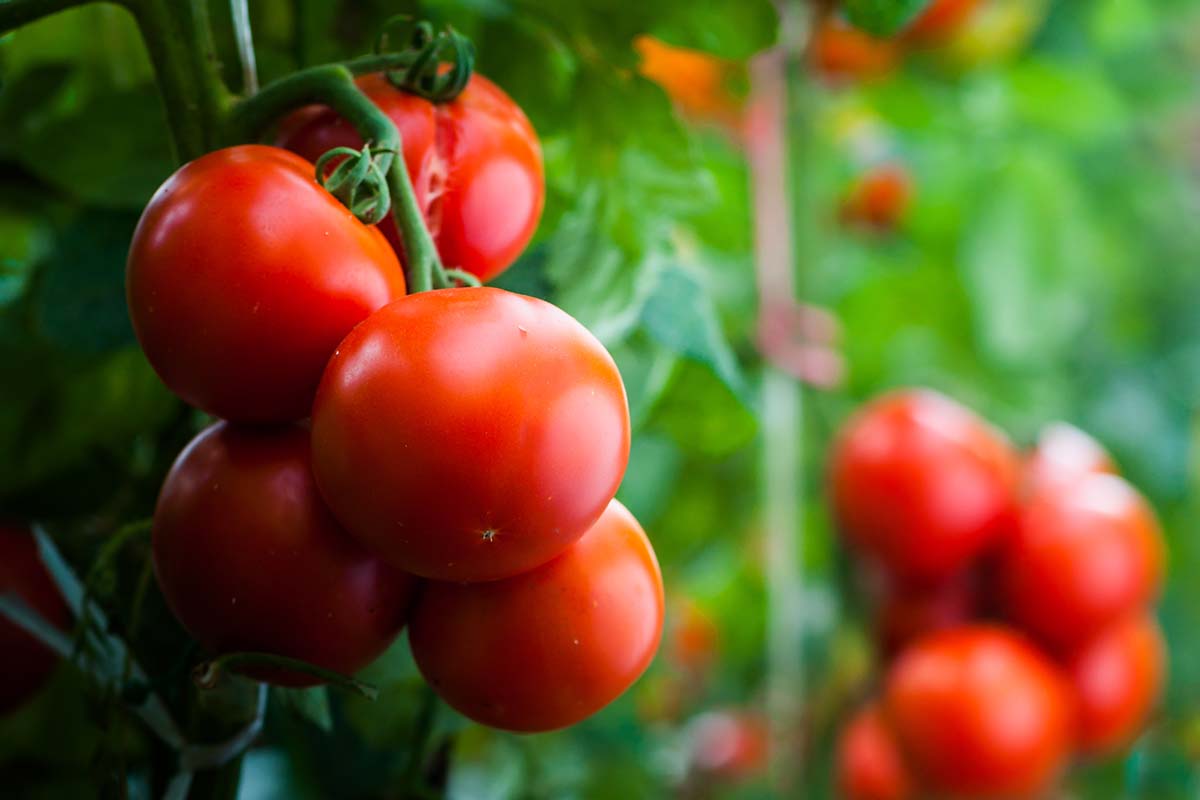
As long as you can remember to provide consistent moisture to the roots a few times a week, you should be good to go. And your tomatoes will definitely thank you for it!
What are your tips for watering tomato plants? Feel free to share in the comments section below!
Check out these articles for more tips on growing strong and vigorous tomatoes next:
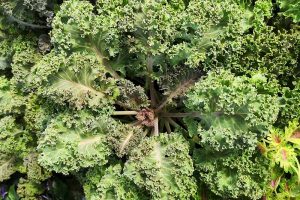


So helpful
I have a handheld device that measures moisture in the soil. I never let the moisture get below 70%.
These can certainly come in handy! Read more about soil moisture meters in our guide.
I use water bottles to water my tomatoes. Cut bottles in half and puncture with hot fork and put half bottles near base of plants to water. The water goes in soil and roots easily. Tomatoes and other plants say thank you every morning!!
Great idea, Cathy! Thanks for sharing.
So helpful, your advice. Thank you.
Where do you get the moisture meters? Garden store?
Hi Cathy, check out our guide to moisture meters – this explains the different types and where you can buy them!